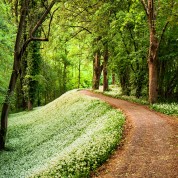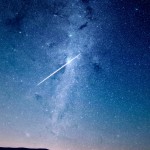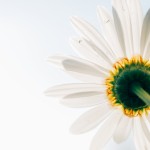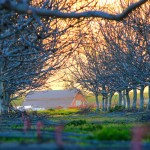
“This is the activity of the human being who has become whole: it has been called not doing, for nothing particular, nothing partial is at work in man and thus nothing of him intrudes in the world” ~ Martin Buber
The wilderness solo is a profound experience that is both innately personal and universal. We go into the wilderness to be alone with ourselves, oftentimes without words to adequately describe our experience, and come out with a distinct clarity of our purpose in the world. Ultimately, what happens alone is for us alone, but it is not for us to keep, but to enact for the greater good.
The solo is a time for finding the power that exists within the self. It comes with practice and ceremony that arises spontaneously. My power arose from a sense of rootedness, and a sense of bridging dual parts of myself. My great lesson was learning to be in nature. To integrate all parts of myself–mind, body, and spirit–and move from a place of my own whole true nature.
Preparation
In preparation for the solo, I wrote down this quote from Black Elk into my journal,
“A man who has had a vision is not able to use the power of it until after the has performed the vision on earth for the people to see” (Little, 1984, p. 28).
I went into the solo with a sense of reverence and responsibility for what was about to happen. I prepared by meeting my inner world, exactly where I am. Noticing areas in my life where I felt stuck, noticing how I tell the story of who I am, and setting the intention to let die the self that was stale and passive and that didn’t take ownership of her own life and story. In the stage of preparation before the solo, we notice dreams and prepare the heart and mind (Little, 1984, p. 1). A Few weeks prior I dreamt of a snake with a clear message: I am coiling, I am here waiting to be released. I ponder this message and allow it to remain in my consciousness.
Power within
In The Soul Unearthed, Stine describes the process of choosing a power spot in which to solo. We choose a place that “mimics our own inner psychic world” (Stine, 2002, p. 34). I chose my power spot based on my sense of rootedness, my power to choose, to not be afraid, to be a woman. When I saw the little bridge over the sun-kissed tricking creek, I knew that that place was the source of my power. The bridge over the flowing water brought up a host of metaphors for my solo. I am a relational being, and learning to cross and build bridges, and to walk away from bridges, was the integration I knew I needed to experience. As Robert Greenway describes in The Wilderness Effect and Ecopsychology, the journey into nature is not therapy but opportunity to explore relationship.
At the time I found this spot, I had already half-heartedly chosen another spot. Though the other spot was between two energies I didn’t want to intersect, leaving it behind represented another power of mine: choice. I realized that I don’t have to stay with something just because I liked it at first. I am allowed to change my mind, I am allowed to say no, I am allowed to leave for the sake of choosing my higher path. Though no contracts had been signed for this spot, on a spiritual level it represented my ability to break my original purpose for the sake of stepping into the unknown, stepping into my power. So I chose the bridge spot, the southernmost spot along the creek, representing my connection with all of my roots and all parts of my being (See Appendix A for a poetic representation of my bridge relationship).
Before the solo, I had returned to my original home, which I knew was good timing to dredge up old hurts with the opportunity to process in nature. What came up was my relationship with my mother, which I knew extended to my relationship with mother earth. Healing one would invariably heal the other. My power spot was the place where all of these feelings arose for me.
“truly, the place of power you seek is inside you. As you hike into the mountains to look for your retreat, remember that you seek a place where the inner and outer worlds become one. The ascent of your entire being is the sign you are looking for” (Little, 1984, p. 20).
This spot became the power source for the rest of my solo inspirations to arise.
Nondual ecology
We are a culture that sees separateness. Nature and non-nature. Good and bad. Right and wrong. Black and white. Awake and asleep. But being in nature, I learned to find the marriage of many opposites. My spot reflected the bridging relationship between two sides of myself. Rather than choosing one side or the other, I practiced moving between riverbanks without attachment or aversion to choosing. Both are valuable. As my colleague Natalie reflected during a council practice, “everything on our planet comes from our planet. Even our computers were sourced from nature.” Natalie’s observation struck me as incredibly profound and incredibly simple. We are the planet. Our bodies mimic the energy that moves through the elements. nothing is outside or separate from us. It is safe to accept all parts of ourselves, whether “good” or “bad.” I can be a technology loving, tree hugging, dog walking, materialistic, striving, meditating, angry, loving person. Because I, and everyone else, am capable of the entire human experience.
Crossing the bridge was the centerpiece of my threshold. Symbolic of the inner and outer journey, I practiced being with both sides as I experienced dying of the old and embracing the new.
“burning our bridges behind us, we make better, stronger ones…practice your own dying…death is the greatest ally” (Little, 1984, p. 4-5).
Allowing the reality of death to be near in my awareness, I let go of my attachment and understanding of who I am. I awaken renewed with a sense of flow, a sense of connection with this life I carry as it is, now.
Marriage ceremony
“I now pronounce you mind, body, and spirit. You may now kiss the sky.”
These are the words I spoke after performing a ceremony that marked my highest intentions for my solo time (See Appendix B for a list of intentions written in my journal). This marriage ceremony arose spontaneously over the bridge, and informed the visions that would guide my life. Starting anew, “we are offered a clean slate from which to write our lives” (Stine, 2002, p. 33). After the ceremony, I dressed myself in a white dress to symbolize being my highest self. The words I used and the actions that arose were a complete part of me. I felt confident and empty, and what flowed through me came straight from my heart.
“all these attributes–timeless, direct, spontaneous, open, unconditional value, and compassionate–go together as one thing…’the natural state’…’the Source’…It’s what is ‘at the heart of the heart of the heart.’ (Senge, 2005, p. 99).
This marriage was not just between the parts of myself, but between me and the source, between me and nature. I felt a deep sense of comfort and being in my true nature.
Beingness
Sometimes I found myself worrying that I wasn’t doing it ‘right’, that I wasn’t doing enough practices, that I wasn’t fully embodying my purpose. But I learned during my time that being in the wilderness solo was embodyment enough, and I need not worry about ceremony or practice to make it ‘right’. The act of being present to all that was moving inside and out was the exact experience I needed to have.
“trusting the world, as it is. To be trusting is your basic goodness…Your basic trust relaxes you and lets you be.” (Hayward, 1998, p. 14).
Learning to just be without doing was an incredible journey, one that I don’t find opportunity for much in my western culture. Trusting that what I need will arise is the practice of allowing the universe to hold me, and of unfolding in my journey in the universe.
Intention as path to transformation
My practice of being in nature is the source of intention for my life moving forward. Not having to “do” based on the sway of cultural impulse, there is an intuitive knowing that arises from a place of non-doing (nondual) or being, in nature. Trusting this place of stillness as a way for pure action to arise was a powerful experience for me.
“the earth speaks to us through our lives and bodies and psyches” (Sewall, 1995)
I return as a married woman, going forth with all I have learned.
Return
It is always a little awkward to incorporate all one has learned in nature when returning to one’s life. I feel very clear about who I am and how nature speaks through me, yet translating this is a lifelong practice.
“returning from your journey, you will assume the task of bringing your self, your vision, your understanding into the body of the world–for the benefit of your people” (Little, 1984, p. 2).
All that I have seen, felt, and experienced is where I come from, and what I now bring with me into the world, not to improve upon it, but to incorporate it.
Luckily, I was able to begin my practice of return with my colleagues at camp. We shared our experiences, listened to one another, and held each other in safety and love. I even saw the coiled snake I had dreamt about before I left, except this time it was underneath my foot as I was about to step over it. My entire body awoke and my intuition led me to leap over the snake and avoid an unpleasant encounter. I felt such a power from that coiled snake, like I spit it out once I created a clear intention. That moment was my life. It could have been my death, but it shocked me into remembering my impermanence. I have so much gratitude for the universe that holds and protects me, and the snake that came from within and reminded me of this gratitude. It doesn’t feel like the end, but the beginning. The trip had come full circle. The dream has now become the path.
Having learned how to be in nature, and having performed a ceremony of integration between mind, body, and spirit, it is time to enact my power in the world. The spontaneity that comes from non-doing is a new guide in my process. Now that I have found my power spot in nature, as Black Elk says, I must enact the power out in the world.
References
Stine, A. (2002). Wilderness Kinship. In Adams, C. The soul unearthed: Celebrating wildness
and spiritual renewal through nature. (pp. 32-39). Boulder, CO: Sentient Publications.
Greenway, R. (1995).The wilderness effect and ecopsychology. In Rosznak, T., Gomes, M.E.,
& Kanner, A.D. (Eds.). Ecopsychology: Restoring the earth healing the mind. (pp. 122-135). San Francisco, CA: Sierra Books.
Sewall, L. (1995). The skill of ecological perception. In Rosznak, T., Gomes, M.E.,
& Kanner, A.D. (Eds.). Ecopsychology: Restoring the earth healing the mind. (pp. 201-215). San Francisco, CA: Sierra Books.
Hayward, J. & Hayward, K. (1998). Trust in reality. In Sacred World: The Shambhala way to
gentleness, bravery, and power (pp. 14-26). Boston, MA: Shambhala Publications, Inc.
Little, S., Foster, M. (1984). The trail to the sacred mountain: Vision fast handout for adults. Big
Pine, CA: Lost Borders Press.
Senge, P., Scharmer, C.O., Jaworski, J., & Flowers, B.S. (2005). Presence: An exploration of
profound change in people, organizations, and society. Boston, MA: Nicholas Brealey Publishing.
Appendix A
Crossing Over Bridges, a poem by Lisa E. RomeLife is like the streets of Venice,
A maze of intersecting,
Labyrinthine roads.
Difficult to navigate,
you never truly know,
Where are you going?
But by getting lost,
One finds her way,
Crossing over bridges,
To reach herself.Appendix B
A list of intentions marking a sacred ceremonyI am marking…
…a celebration of love
…choice
…touching the roots of my subconscious connection to my ancestors and honoring their strengths, healing their wounds so that I move from a place of healing
…commitment to the direction of my dreams; what dreams of me
…commitment to my higher self; soul’s destiny
…connection with my intuition and guides






